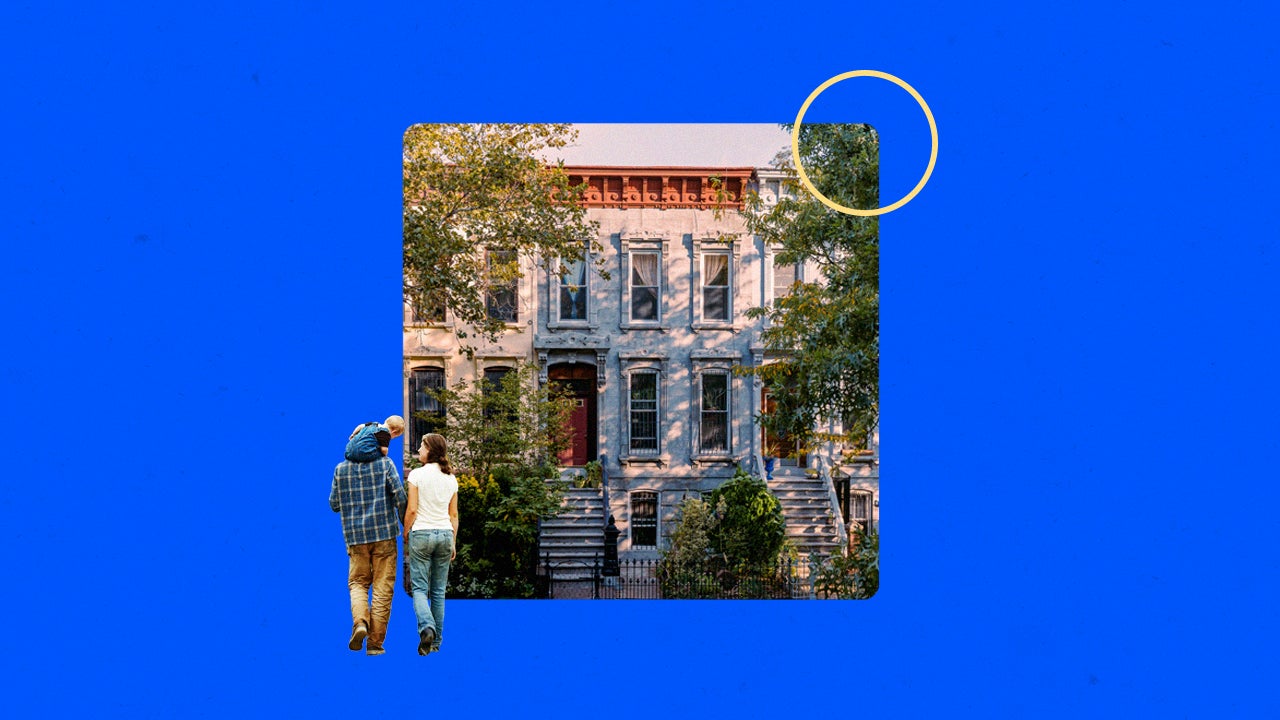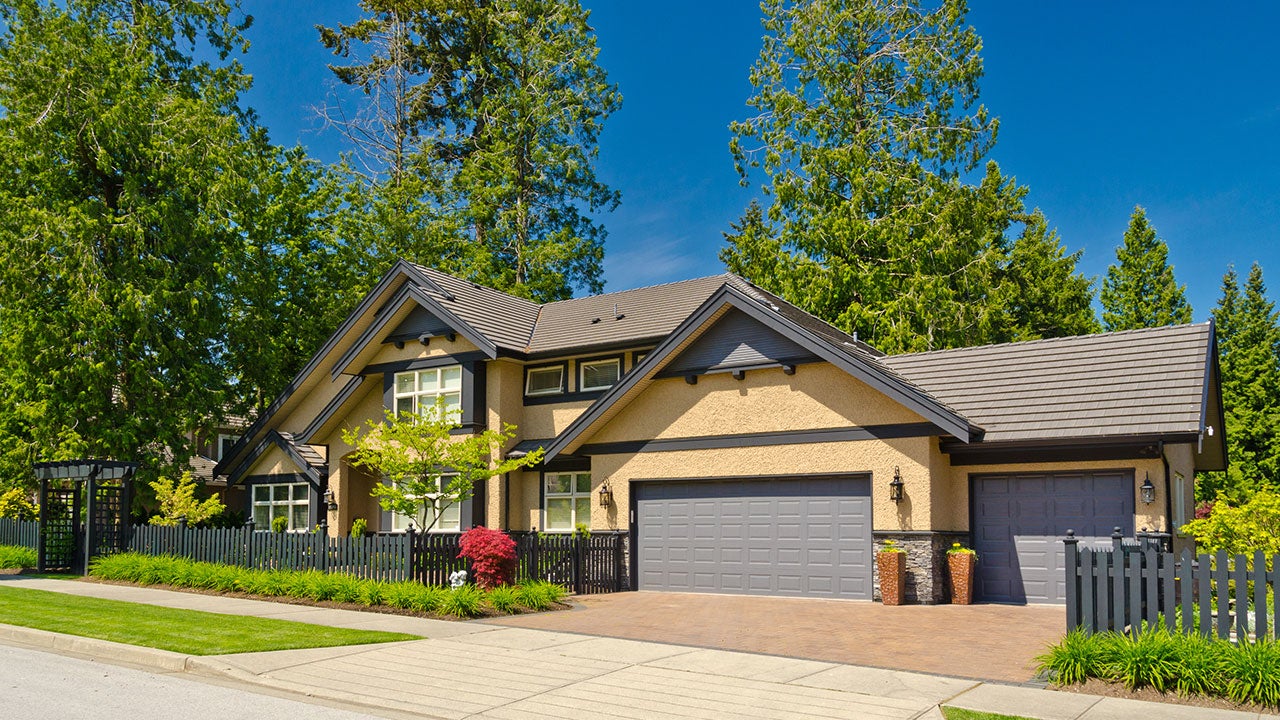What is an FHA loan?

Key takeaways
- FHA loans are a type of mortgage geared toward borrowers with lower credit scores or who otherwise don’t qualify for a conventional loan.
- You can use an FHA loan to buy, build or renovate a home, or to refinance an existing mortgage.
- FHA loans require a minimum down payment of 3.5 percent for those with credit scores of 580 and up.
What is an FHA loan?
An FHA loan is a mortgage that is insured by the Federal Housing Administration (FHA) and offered by private FHA mortgage lenders. FHA loans often have less strict requirements than conventional loans, making them popular with first-time homebuyers and younger buyers.
How do FHA loans work?
FHA loans work like most other mortgages, only they’re backed by the federal government. They’re widely available from private lenders, who can offer these loans to borrowers with lower credit scores and more debt knowing that the government will cover a portion of the loss in case of default.
However, to further help offset the risk, FHA borrowers must pay upfront and annual mortgage insurance premiums, or MIP. This protects the lender if you were to stop repaying your loan.
You’ll also pay closing costs for an FHA loan, such as appraisal and origination fees. The FHA allows home sellers, a home builder or a mortgage lender to cover up to 6 percent of these costs.
In terms of options, FHA loans are similar to conventional loans. You can choose either a fixed or adjustable interest rate and a loan term for a set number of years: 15 or 30.
Current FHA loan rates
FHA loan rates are competitive with, and often slightly lower than, rates for conventional loans. For example, the national average rate for a 30-year FHA loan, according to Bankrate data, is currently 6.62 percent. Meanwhile, the national average rate for a 30-year conventional loan is currently 6.83 percent.
FHA loan requirements
Here’s an overview of the requirements for an FHA loan:
- FHA credit score: You can qualify for an FHA loan with a credit score of at least 580 if you can make a 3.5 percent down payment. If you have a score of at least 500, you’ll need a 10 percent down payment. Individual lenders may require higher scores.
- FHA down payment: You’ll need to put at least 3.5 or 10 percent down, depending on your credit score. You may be eligible for down payment assistance to help cover the cost.
- FHA debt-to-income (DTI) ratio: No more than 31 percent of your income should go toward mortgage payments, and no more than 43 percent of your income should go to debt payments overall — though some lenders will allow higher ratios if, for example, you can make a large down payment.
- FHA occupancy rules: You can take out an FHA loan to buy a primary residence with between one and four units.
- FHA MIP: MIP involves an upfront premium of 1.75 percent of the loan principal, typically paid at closing, plus annual premiums. These may be between 0.15 and 0.75 percent of your loan amount — depending on your down payment, loan amount and loan term — and are usually paid monthly.
- FHA inspection and property requirements: To get an FHA loan, a HUD-approved appraiser must assess the property’s market value and verify that it meets HUD’s basic standards. These include being structurally sound and having adequate drainage, as well as working heating, plumbing and electrical systems and adequate lighting and ventilation, among other requirements.
- FHA loan limits: You can borrow between $524,225 and $1,209,750 for single-family home with an FHA loan, depending on your location.
Types of FHA loans
There are several types of FHA loans, including:
- Basic home mortgage loan or 203(b) loan: The 203(b) loan is the FHA’s main home loan program for buying a home or refinancing.
- Rehabilitation mortgage or 203(k) loan: An FHA 203(k) loan covers the home’s purchase price and repairs. This type of FHA construction loan comes in Standard and Limited options, which cover different types of renovations and have different loan limits. These loans are best for someone buying a fixer-upper.
- Disaster victim mortgage or 203(h) loan: If you’ve lost your home due to a presidentially designated disaster and need to rebuild or buy a new home, you could qualify for an FHA 203(h) loan with no down payment.
- Home equity conversion mortgage (HECM): A HECM is a reverse mortgage insured by the FHA that allows those over the age of 62 to tap the equity in their home as tax-free income. There are downsides to reverse mortgages, but they can be a helpful financial tool for those looking to supplement retirement income.
- Energy–efficient mortgage (EEM): This is a mortgage designed for the purchase of an energy-efficient home, or to upgrade a home to make it more energy-efficient. These upgrades might include insulation, solar panels or energy-efficient appliances.
- Graduated payment mortgage or 245(a) loan: This uncommon type of mortgage comes with payments that start small and increase over time. They’re most often used by those who expect to make more money in the future.
Pros and cons of FHA loans

Pros of FHA mortgages
- You can make a smaller down payment with a lower credit score.
- You may qualify with a higher DTI than is allowed by conventional loans.
- You can own a home and start building equity sooner.

Cons of FHA mortgages
- You’ll have to pay MIP — often for the entire loan term.
- You’ll have to abide by FHA loan limits and property requirements, and you’ll need an FHA appraisal.
- FHA loan fees may make the cost of borrowing higher than for a conventional loan.
Is an FHA loan right for you?
If your credit score is on the lower side, and you don’t need a very large loan, an FHA loan is a great option. It can help you get into a home more quickly, with a lower down payment. However, FHA loans can be costlier than conventional loans, thanks to the mortgage insurance premiums.
If your credit score is at least 620, you’re almost always better off with a conventional loan. You won’t have to pay mortgage insurance for the entire loan term — you can cancel PMI when you accumulate 20 percent equity in your home. Plus, many lenders offer conventional loans with as little as 3 percent down for first-time homebuyers.







